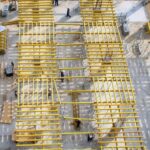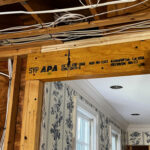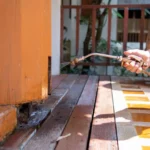Construction site safety requires strong protective measures, with scaffolding protection being essential in keeping workers and the public safe. Australian building sites have their own challenges – such as intense sun exposure and controlling dust in urban areas – making the decision between scaffold netting and shade cloth an important one.
The right protective material serves multiple functions:
- Ensuring worker safety and preventing falls
- Protecting the environment
- Containing debris
- Shielding against weather conditions
- Implementing safety measures for the public
Scaffold netting and shade cloth each bring distinct advantages to construction projects. While netting excels in safety applications and debris control, shade cloth specialises in environmental comfort and dust suppression. These materials differ in their construction, density, and primary applications – factors that directly impact project outcomes.
Choosing the right scaffolding protection requires careful consideration of specific site requirements, safety regulations, and environmental conditions. This guide looks at the main features of both options to help you make a smart decision for your construction project.
Understanding Scaffold Netting
Scaffold netting is an essential safety feature on construction sites. Its main purpose is to prevent workers and pedestrians from falling and to keep debris contained. This vital piece of equipment creates secure areas around scaffolding structures, ensuring the safety of everyone involved.
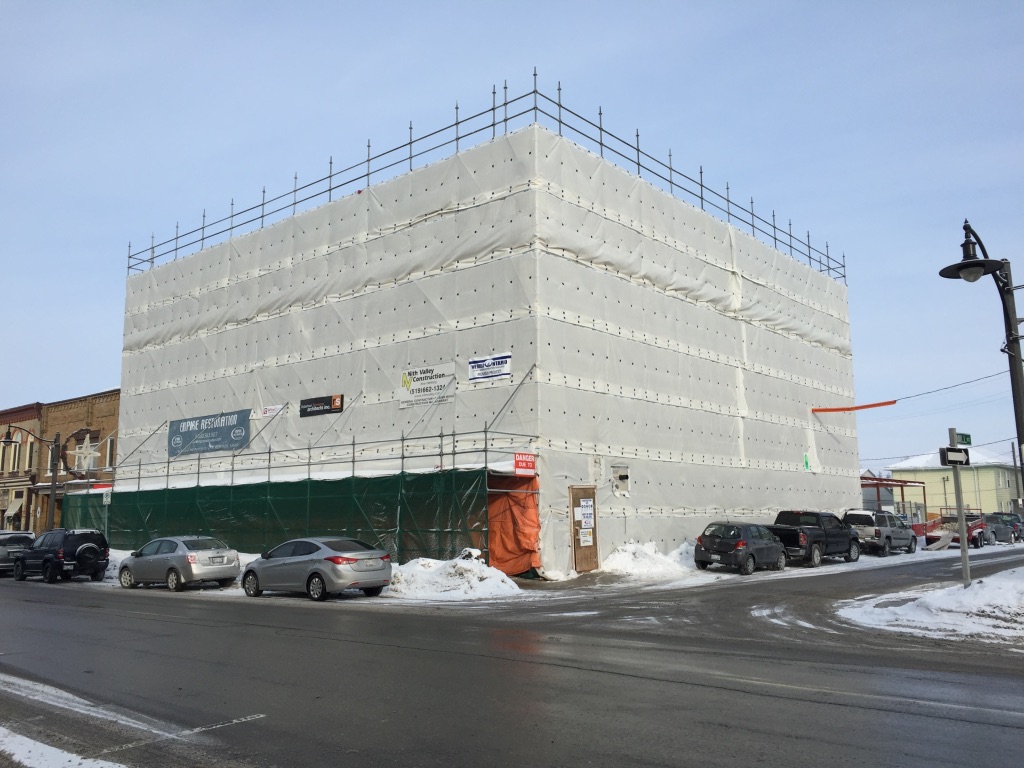
Material Composition
Scaffold netting is made from high-quality materials to ensure its effectiveness:
- Fabric: High-density knitted shade cloth fabric
- Threads: Polyethylene threads with reinforced weaving
- Safety Treatments: Fire-retardant treatments for enhanced safety
- Reinforcement: Reinforced edges with brass or steel eyelets
Density Classifications
The density of scaffold netting plays a crucial role in determining its purpose:
- Standard-duty: 60-85 g/m² for general debris containment
- Heavy-duty: Up to 200 g/m² for fall protection compliance
- Extra heavy-duty: 250+ g/m² for specialised applications
When selecting the appropriate density, it’s important to consider the specific needs of your project. Higher density ratings offer better fall protection capabilities, while lighter options are suitable for basic debris containment requirements.
Read more about formwork plywood at: An Introduction to LVL Formwork Timber for Construction Projects
Customisation Options
To meet various site conditions and visibility requirements, scaffold netting can be customised in several ways:
- Mesh sizes: 2mm to 100mm depending on protection requirements
- Colours: White, green, black, or custom options for site visibility
- UV treatments for Australian sun conditions
- Custom dimensions to fit specific scaffold configurations
Installation Considerations
Proper installation of safety netting is crucial for its effectiveness. Here are some key factors to keep in mind:
- Spacing of reinforced eyelets: Safety netting installations require precise spacing of reinforced eyelets, typically positioned at 50cm intervals. This spacing ensures proper tension distribution and maintains the netting’s protective capabilities throughout its service life.
- Compliance with Australian standards: Australian construction standards mandate specific requirements for scaffold netting, including minimum breaking strength ratings, UV resistance certifications, fire retardancy compliance, and regular inspection protocols. Read more about resistance on https://micro.magnet.fsu.edu/electromag/electricity/resistance.html
By following these guidelines during installation, you can maximise the performance and longevity of your scaffold netting system.
Durability in Harsh Conditions
The integration of UV-resistant treatments extends the netting’s durability, particularly crucial in Australia’s harsh climate conditions. These treatments prevent material degradation and maintain the netting’s structural integrity throughout extended outdoor exposure.
It is essential to choose scaffold netting that meets these durability requirements to ensure its effectiveness over time.
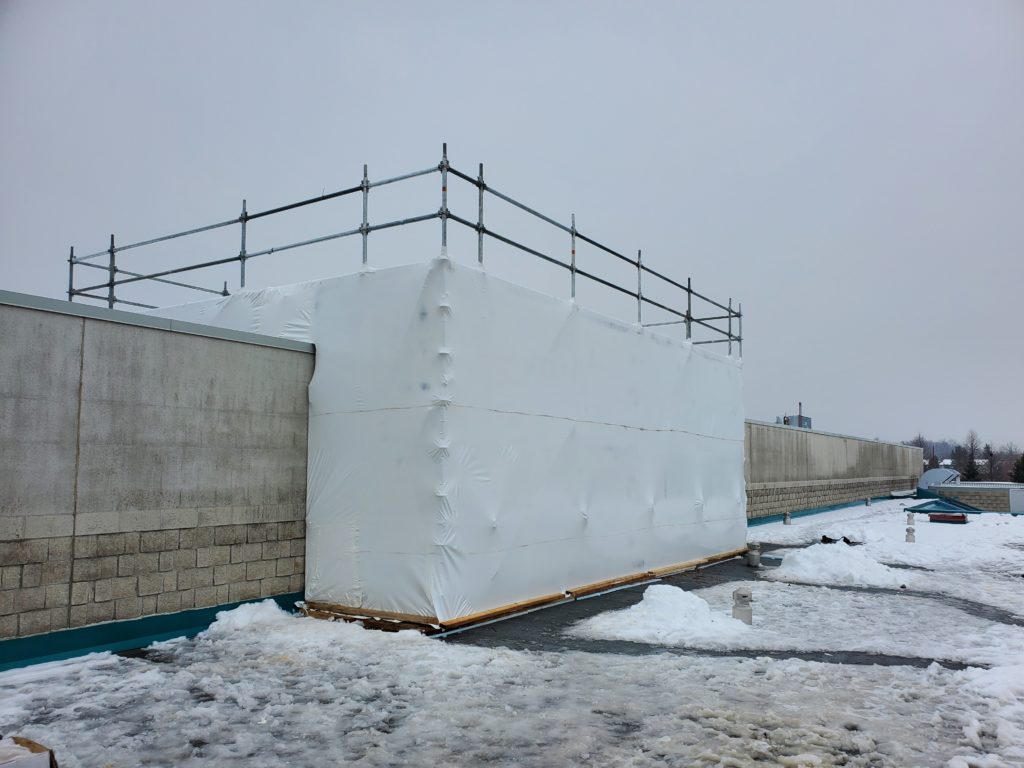
Understanding Scaffold Shade Cloth
Scaffold shade cloth is a versatile protective barrier used to create comfortable working environments on construction sites. It is made from high-quality polyethylene or polypropylene materials and comes in woven or knitted forms. These fabrics provide essential protection while allowing for proper airflow.
Material Composition and Design
Scaffold shade cloth is designed with specific features to ensure its effectiveness:
- Lightweight and breathable fabric structure
- UV-stabilised materials for long-lasting outdoor use
- Available in densities ranging from 50% to 95% shade rating
- Custom colour options to meet specific site requirements
The construction of scaffold shade cloth uses specialised weaving techniques that strike a balance between sun protection and air permeability. This design allows for:
- Natural ventilation through the fabric
- Heat reduction in work areas
- Light filtration without complete blockage
- Structural flexibility for easy installation
Multi-Purpose Applications
Scaffold shade cloth serves multiple purposes beyond just blocking the sun:
- Dust Control
- Reduces airborne particles
- Contains construction debris
- Minimises environmental impact
- Wind Protection
- Creates sheltered work zones
- Reduces material displacement
- Maintains stable site conditions
- Privacy Screening
- Conceals construction activities
- Enhances site security
- Professional site presentation
The adaptability of scaffold shade cloth makes it particularly valuable for urban construction projects where controlling the environment and considering nearby residents are crucial. Its durable construction can withstand Australian weather conditions while providing essential protection throughout the entire project lifecycle. Click here to find more about environment.
Key Functional Differences Between Scaffold Netting and Shade Cloth
The distinct characteristics of scaffold netting and shade cloth create specific advantages for different project requirements:
1. Safety and Protection
- Scaffold netting provides critical fall protection with high-density materials rated up to 200 g/m²
- Shade cloth focuses on environmental protection without meeting fall safety standards
- Netting serves as a robust barrier against falling tools and materials
- Shade cloth offers basic protection against lightweight debris
2. Debris Management
- Netting’s tight mesh structure captures construction debris effectively
- Shade cloth allows some particles through while reducing dust spread
- Heavy-duty netting contains larger objects and materials
- Dust suppression works better with shade cloth’s breathable design
3. Wind Resistance Properties
- Netting creates a semi-permeable barrier that reduces wind force while allowing airflow
- Shade cloth acts as a wind break with varied effectiveness based on density
- High-density netting maintains structural integrity in strong winds
- Shade cloth may require additional reinforcement in high-wind conditions
4. Visual and Privacy Features
- Netting typically maintains visibility through its mesh structure
- Shade cloth provides superior privacy screening
- Transparent netting allows natural light penetration
- Shade cloth offers customisable light filtration levels
5. Performance in Different Conditions
- Netting excels in high-risk areas requiring safety compliance
- Shade cloth performs better for dust control and sun protection, especially when it is fireproof, UV-treated, and hot-dipped galvanized for lasting protection.
- Weather resistance varies between materials
- Site location influences material selection based on environmental factors
Choosing the Right Material Based on Project Needs
Selecting appropriate scaffolding materials requires careful consideration of specific project requirements and site conditions. A systematic evaluation of these factors ensures optimal safety and efficiency throughout the construction process.
Essential Project Considerations:
- Safety Requirements: Height of the structure, proximity to public areas, type of construction activities, local building regulations
- Environmental Factors: Site location (coastal/inland), weather conditions, duration of project, seasonal variations
Urban construction sites often demand specialised solutions for noise reduction and dust control. Chain and shade mesh combinations prove particularly effective in these environments, offering both protective and environmental benefits.
Site-Specific Material Selection:
- Urban Sites: Dense mesh configurations, noise reduction capabilities, enhanced privacy features, dust suppression properties
- Coastal Locations: UV-resistant materials, corrosion-resistant components, salt-spray protection, wind-load considerations
The selection process should prioritise materials that match the project’s primary challenges. For instance, coastal construction requires UV-resistant shade cloth similar to the importance of using rust-resistant reo bars in marine environments.
Material Performance Criteria:
- Tensile strength ratings
- UV protection levels
- Wind permeability
- Fire-retardant properties
- Installation requirements
- Cost-effectiveness
- Reusability potential
Australian construction standards and local council requirements play a crucial role in material selection, ensuring compliance while maintaining project efficiency and safety.
Installation and Maintenance Considerations for Scaffold Materials
Proper installation and maintenance of scaffold materials directly impact worksite safety and material longevity. Here’s what you need to know about setting up and maintaining these essential protective elements:
Scaffold Netting Installation Best Practices
- Secure netting with reinforced eyelets at 1-metre intervals
- Install from bottom to top, maintaining consistent tension
- Create 300mm overlaps between sections to prevent gaps
- Use UV-resistant cable ties rated for external use
- Check anchor points daily during setup phase
Shade Cloth Setup Requirements
- Position cloth at 15-degree angle for optimal shade coverage
- Leave 150mm gap at bottom edge for air circulation
- Install tension cables every 2 metres to prevent sagging
- Use corner reinforcement patches at high-stress points
- Secure edges with heavy-duty industrial zippers or velcro strips
Essential Maintenance Protocols
Daily Checks
- Inspect for tears, holes, or loose fixings
- Remove any caught debris
- Check tension levels remain adequate
- Verify all anchor points remain secure
Monthly Maintenance
- Clean surfaces with low-pressure water spray
- Test UV coating effectiveness
- Replace damaged sections immediately
- Document wear patterns for future reference
- Assess tension system integrity
Storage Requirements
- Store dry materials in cool, covered areas
- Roll rather than fold to prevent permanent creasing
- Keep separate from sharp objects or rough surfaces
- Label with installation dates for tracking purposes
Regular maintenance inspections help identify potential issues before they compromise safety or require complete material replacement. Australian standards require documented safety checks, making proper maintenance protocols essential for compliance and certification.
Cost Implications of Using Different Scaffold Materials
The cost structure of scaffold protection materials varies significantly based on material density and durability requirements. High-density scaffold netting (200 g/m²) commands premium pricing due to its enhanced safety features and fall protection capabilities. These materials typically range from £3.50 to £5.00 per square metre.
Standard-density netting (60-85 g/m²) presents a mid-range option at £2.00 to £3.00 per square metre, balancing protection with affordability. This option suits general construction projects where basic debris containment is required.
Scaffold shade cloth offers cost-effective solutions:
- Light-duty shade cloth: £1.50-£2.50 per square metre
- Medium-duty options: £2.00-£3.50 per square metre
- Heavy-duty variants: £3.00-£4.00 per square metre
The initial investment differences between materials should be weighed against their expected lifespan. High-density netting’s durability can offset its higher upfront cost through reduced replacement frequency, particularly in long-term projects or harsh environmental conditions.
Price ranges are approximate and may vary based on supplier, quantity, and specific project requirements
Conclusion
Choosing the right scaffolding material is crucial for the success of your project. The decision between scaffold netting and shade cloth can have a significant impact on worker safety, project efficiency, and cost-effectiveness.
Professional guidance is invaluable when navigating these material choices. At Covert Procurement, we have a proven track record of improving formwork plywood quality while reducing costs across construction projects in Australia. Our expertise in sourcing high-quality formwork plywood, such as F14 and F17 stress grades, directly benefits scaffolding material selection.
Key considerations for optimal material selection include:
- Project-specific safety requirements
- Environmental conditions
- Budget constraints
- Installation complexity
- Long-term durability needs
Working with experienced procurement specialists ensures that your chosen scaffolding materials meet Australian standards, project specifications, and budget requirements. The right expertise turns material selection from a difficult decision into a strategic advantage for your construction project.
If you’re also considering structural laminated veneer lumber (LVL) as part of your formwork or scaffolding needs, our team can assist with that too. Contact us to discuss your scaffolding material requirements and discover how our procurement solutions can enhance your project outcomes.

